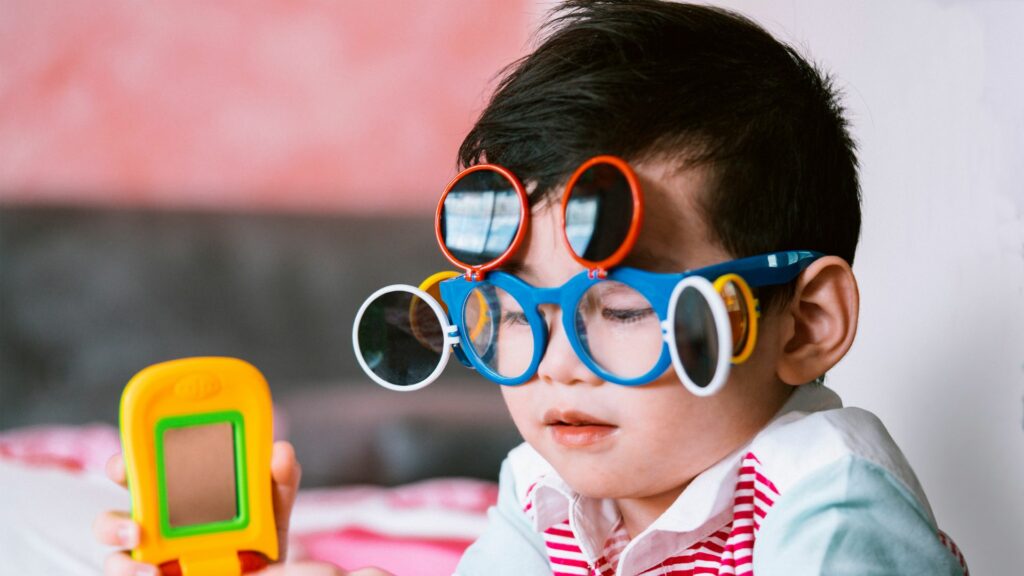Strabismus should be detected and treated as early as possible, recommends doctor Lavinia Postolache, paediatric ophthalmologist at the University Hospital of Brussels and Erasmus, or children may risk long-term effects.
Strabismus is a visual disorder where the eyes are misaligned and point in different directions. In the case of normal vision, both eyes stare at the same target at the same time and the brain therefore receives two identical images to make a 3D image. With strabismus, the two eyes are not aligned and therefore send two different images to the brain and in the case of a young child, the brain will keep only the image of the sharpest eye and, as a result, the visual acuity of the other eye decreases little by little.
It is one of the most common eye conditions in Belgian children, affecting between six and eleven percent of the population, across Wallonia, Flanders and the German-speaking community, reports RTBF.
What causes strabismus?
The exact cause of the eye misalignment that leads to strabismus is not fully understood. However, strabismus is certainly more common in families with a history of the disorder and can occur at any age. It can be intermittent or permanent.
According to Lavinia Postolache, strabismus in babies is most often a congenital disorder that manifests itself at birth or during the first weeks of life. Risk factors for developing strabismus in a newborn include familial predisposition, prematurity, neurodevelopmental problems as well as all causes that can cause vision problems.
What can parents do?
“It is crucial to detect and treat strabismus as soon as possible, regardless of the age of the child, to prevent long-term visual complications and promote normal visual development,” Dr. Postolache told RTBF. “If you notice intermittent strabismus in your baby, you can wait up to six months before consulting a doctor. On the other hand, if strabismus is permanent then it is necessary to consult more quickly.”
Parents who are concerned can monitor their baby's eyes at home by observing if they are aligned or if they seem to cross or deviate permanently or intermittently. At around four to six months old, the baby must be able to follow objects that do not make noise and be interested in the faces of their loved ones. Experts say you can also put a light in the baby's eyes at around three months of age to see if they are well centred.
“If strabismus is left untreated, it can affect your baby's vision in the long term,” she added. “The brain can suppress the image of the eye that is deviated, resulting in vision loss or amblyopia, also known as lazy eye.”
Strabismus in a newborn can be diagnosed during a routine eye exam at the paediatrician or ophthalmologist. If strabismus is suspected, further testing can be done to assess the severity and cause of strabismus.
Related News
- Over a third of francophone Belgians put off medical care in 2022
- Over two years waiting time for diagnosis of 'developmental disabilities' in Flanders
What is the treatment?
Treatment for strabismus depends on its cause and severity. Options may include glasses, eye patches, and surgery. “At first, we will protect the visual acuity,” Dr. Postolache said. “To do this we can use an eye patch that the child will keep on permanently for around seven years. Orthoptic rehabilitation is also a treatment option that can help strengthen eye muscles and improve eye coordination.”
When the deviation persists, strabismus can be treated with surgery. “It is best to practice this surgery before the patient reaches two years old if it is an early strabismus,” she added. “This is performed on the extra-ocular muscles, responsible for the movements of the eyeball.”
“There are no specific measures known to prevent the development of strabismus in newborns,” concluded Dr. Postolache. “However, it is important to monitor your baby's eyes regularly and perform healthcare screening properly. Another important thing is to avoid screens as much as possible before the age of three, and that goes for avoiding all visual problems.”

